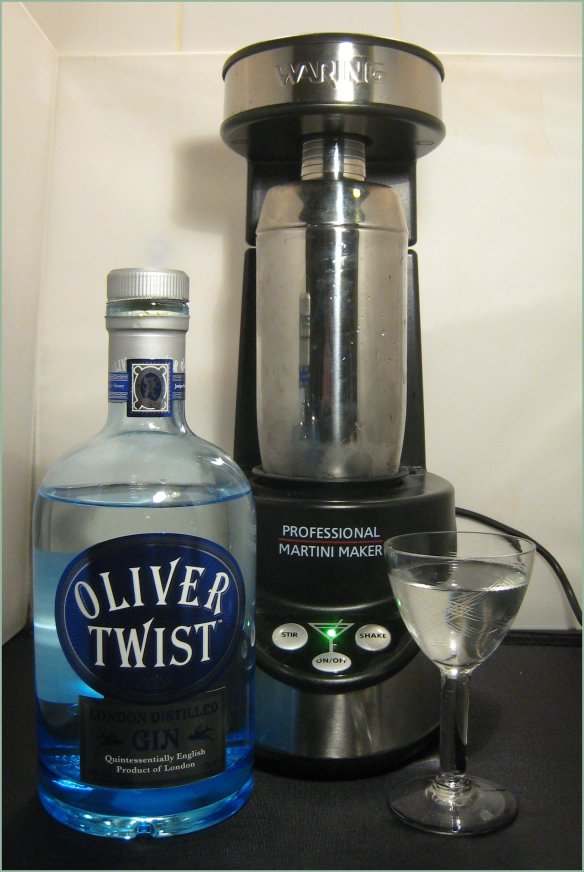
In the second part of my writings on Martini Gadgets, I shall be looking at Martini Droppers: they are not as unusual as the stones and hopefully a little easier to get hold of for those of you who may be inclined to try one yourselves.
Many readers will, no doubt, remember chemistry lab sessions from their school days spent using pipettes to carefully measure out quantities of Hydrochloric Acid and other nasties; so why not use one for your vermouth? In its most basic form, this is what a Martini Dropper is.

RX Martini Dropper in Vermouth Bottle
RX Martini went one step further by creating an extra long version (32cm, in fact) that would fit into a full-size bottle of vermouth. It came attached to a cork; the idea being that this would replace the cap and the dropper would constantly sit in the bottle, ready to dispense vermouth at a mere moment’s notice. The bulb on the end looks rather like an olive and the glass pipe is graduated with assorted measurements.
Another variety is the eye-dropper style vermouth bottle. In this case, you fill this small bottle (around 20ml in size) with vermouth and use the built-in dropper to add droplets to your mixing glass. Most famously made by Gorham, they were often ornately decorated and plated in silver the one below was made by Fisher.

Silver Plated Vermouth Dropper Bottle
But do Martini Droppers work?
For my test, I used Miller’s Wesbourne Strength Gin. I opened a fresh bottle of Noilly Prat Vermouth and inserted the dropper. It is worth noting here that, when adding a dropper to a fresh bottle, you should be careful that it doesn’t cause your vermouth to overflow!

Mrs. B demonstrating the Vermouth Dropper with Miller's Westbourne Strength Gin
For my test, I made a Martini using about 15 drops (50 drops = ⅓ Ounce) of vermouth.
I had forgotten how great Westbourne Strength was in a Martini, and the dropper allows you to measure how much vermouth you want to add to your drink very precisely (unlike the Martini Stones). I think they would be useful for any drink with a ratio of less than 5:1 (gin to vermouth). For a wetter Martini, you would be better off using a simple measure.

Martini Dropper Results
Once again you may be thinking: this is all well and good, but where can I get a Vermouth/Martini Dropper today? The simplest and cheapest option would be to buy yourself a small plastic pipette, which can be purchased for less than couple of pounds/bucks/euros.
UPDATE: Refitting your Martini Dropper
The problem with vintage rubber bulb is that if they haven’t been kept supple from extended periods of inaction they tend to perish which is a very difficult process to reverse. However it is possible to replace the bulb. First you need to find a dropper bottle with a similar sized bulb, I got mine on eBay for £1.50. You remove the bulb from the new bottle by carefully pulling out the glass dropper tube (they tend to just be fitted tightly as opposed to being glue) with a little wiggle you’ll have it free, then you push the bulb out of the cap ring and it’s free. Perform similar process with the old dropper bottle to replace the bulb. This is surprisingly easy to do as most dropper bottles are designed to come apart for easy cleaning. see below for a before/after:













































